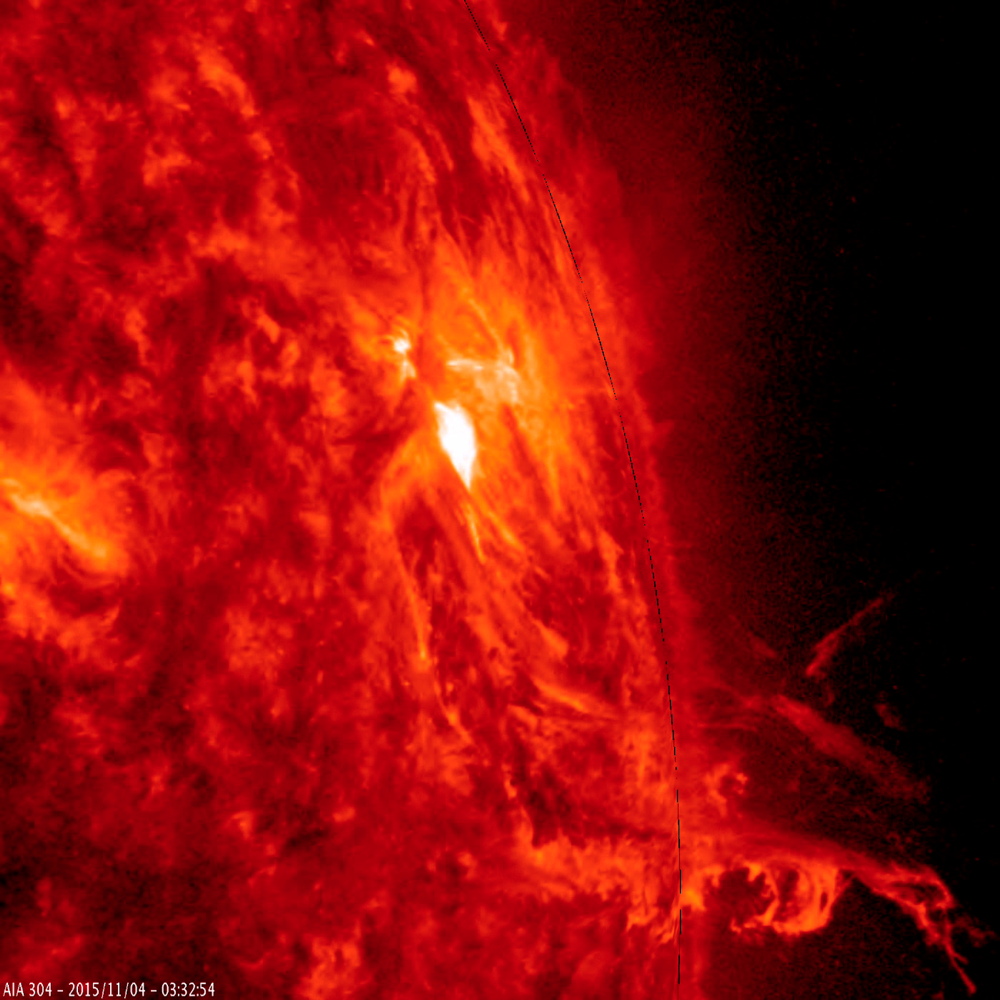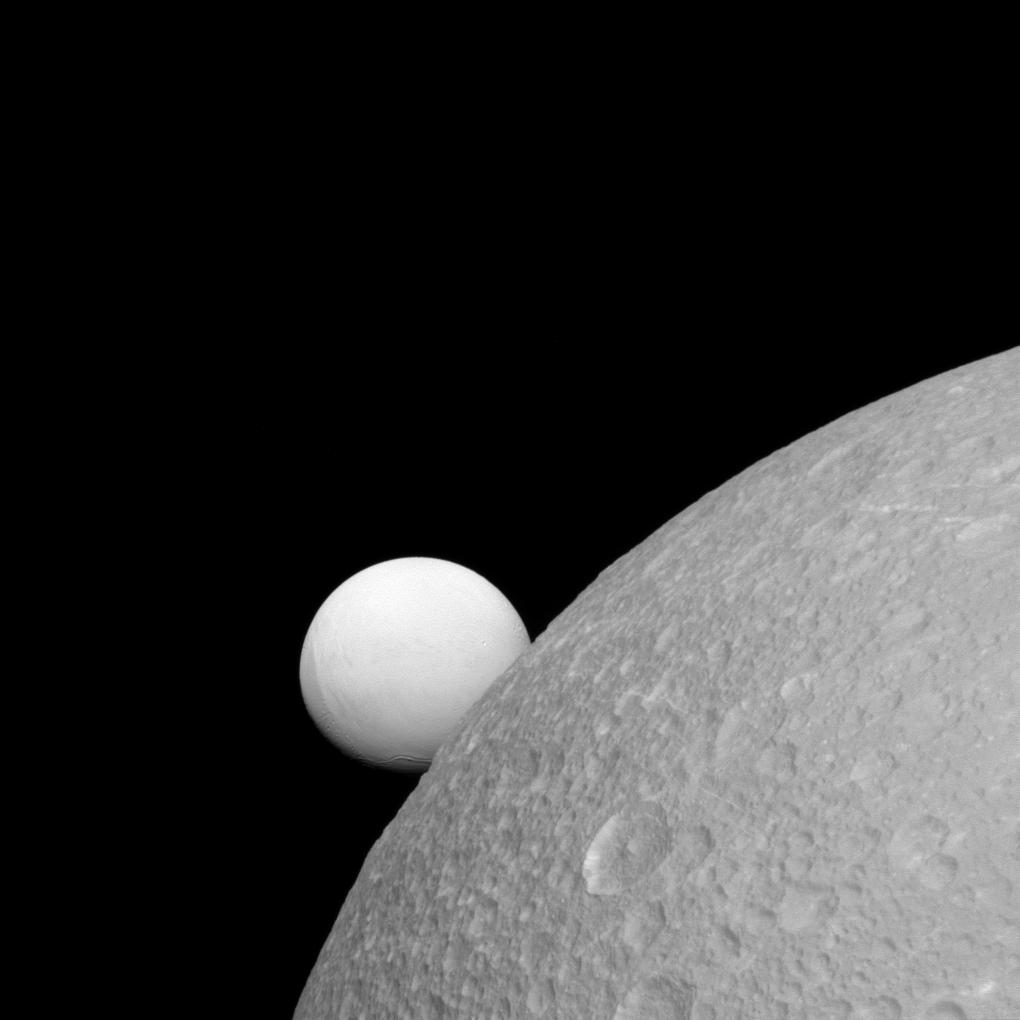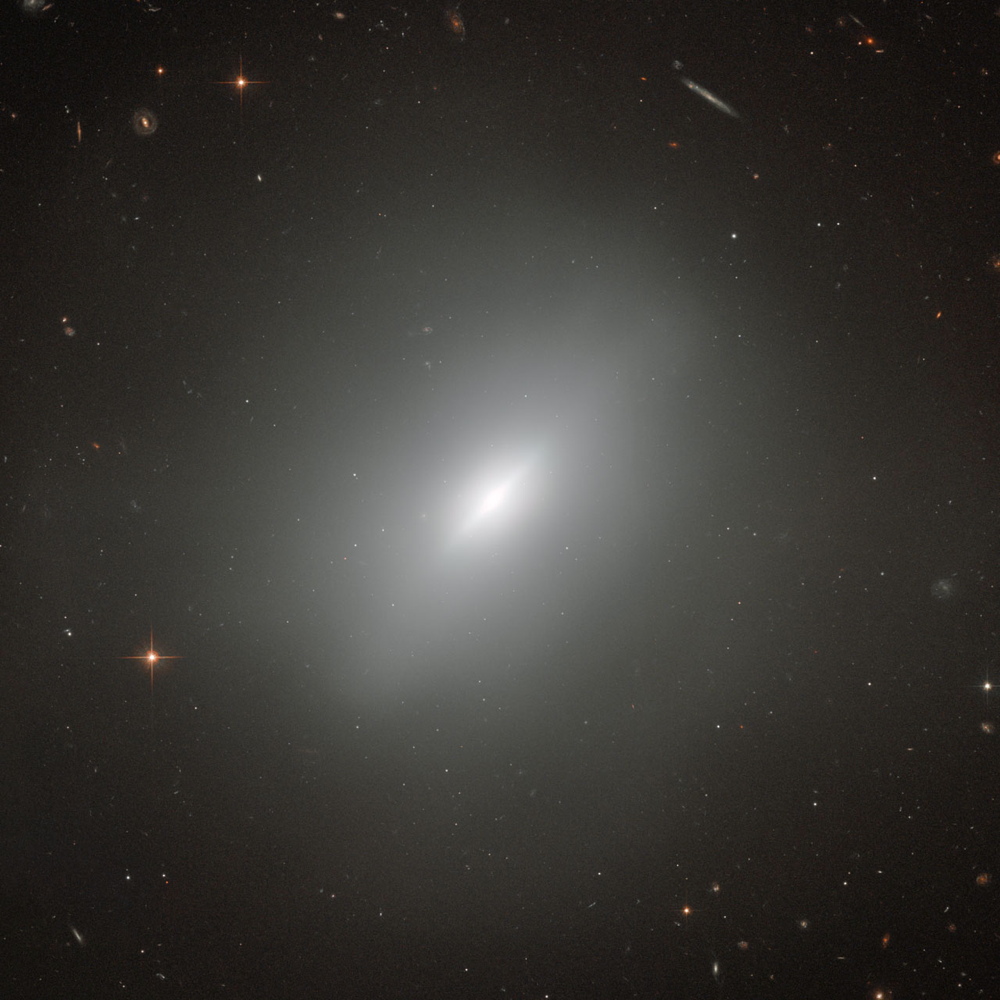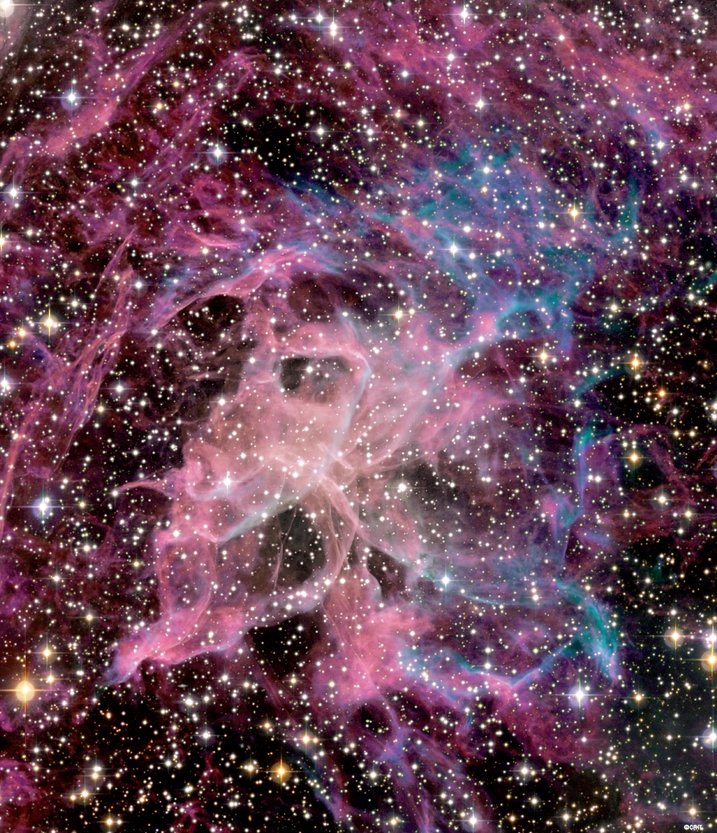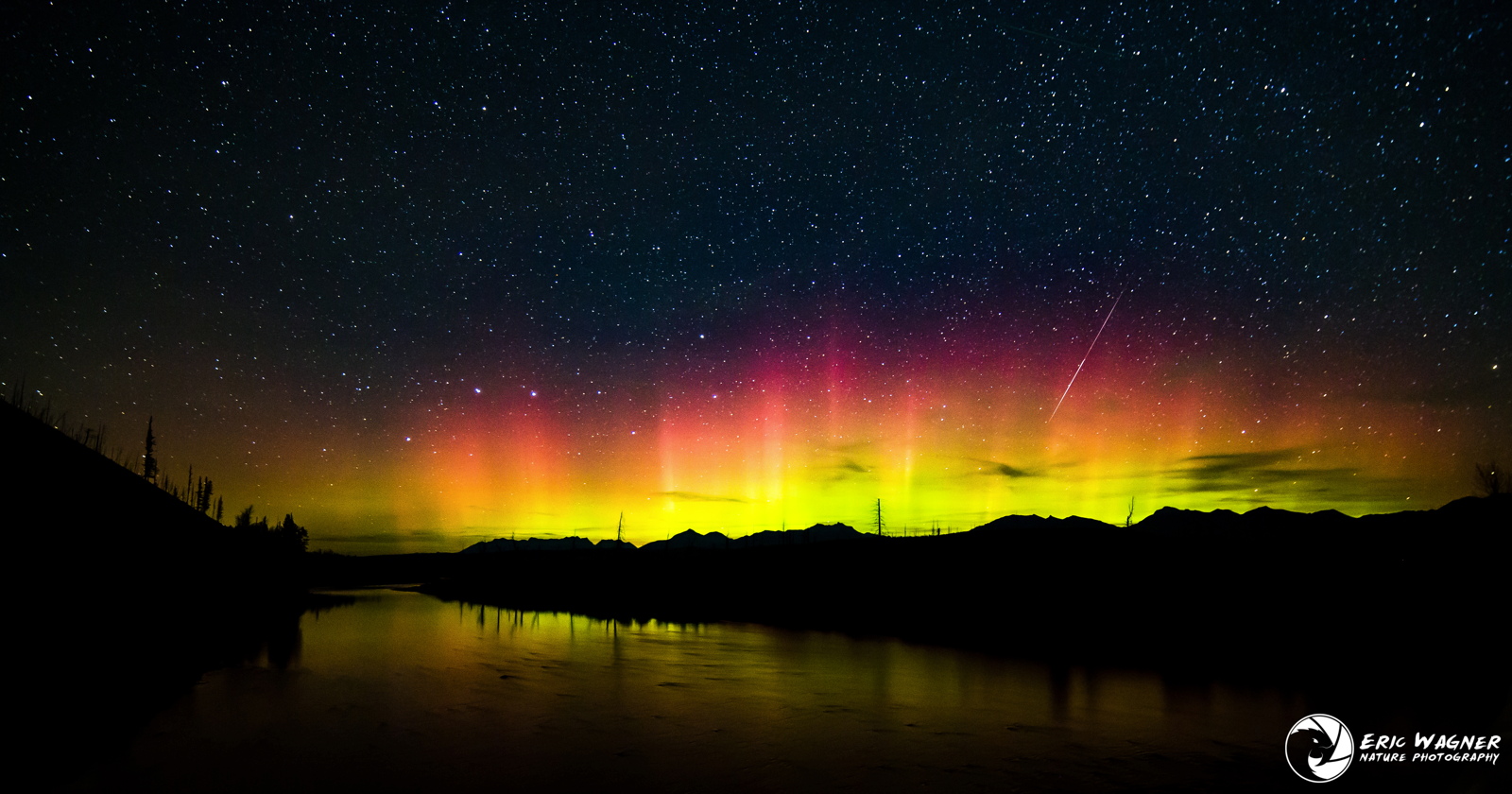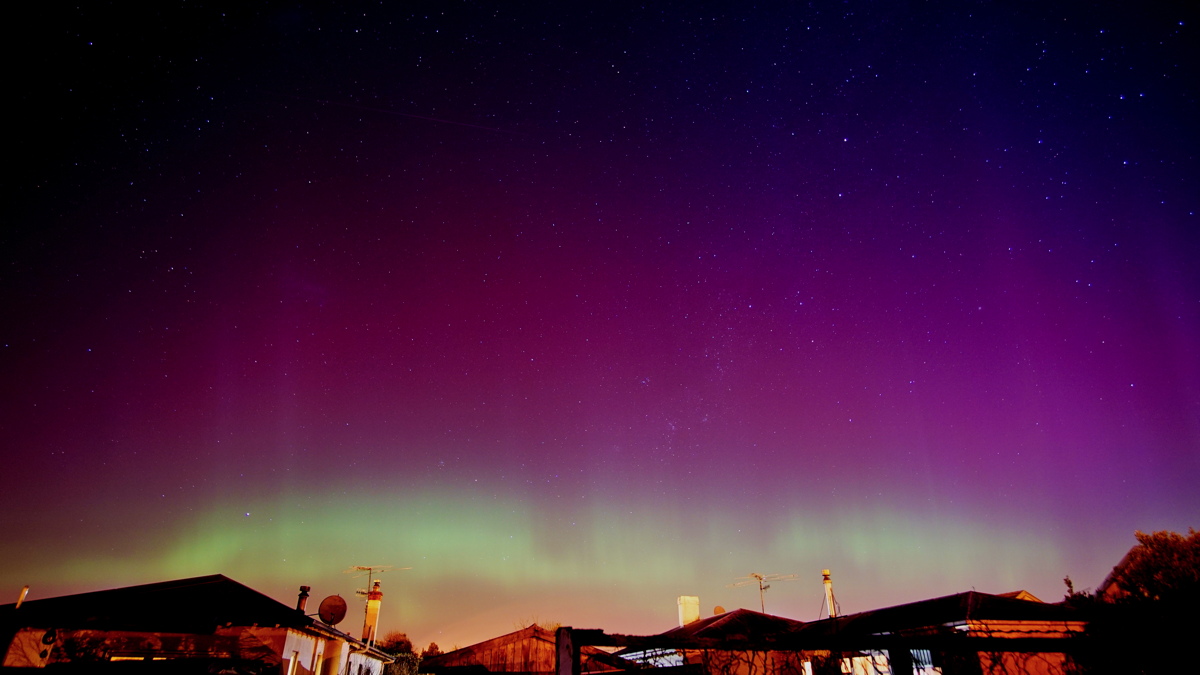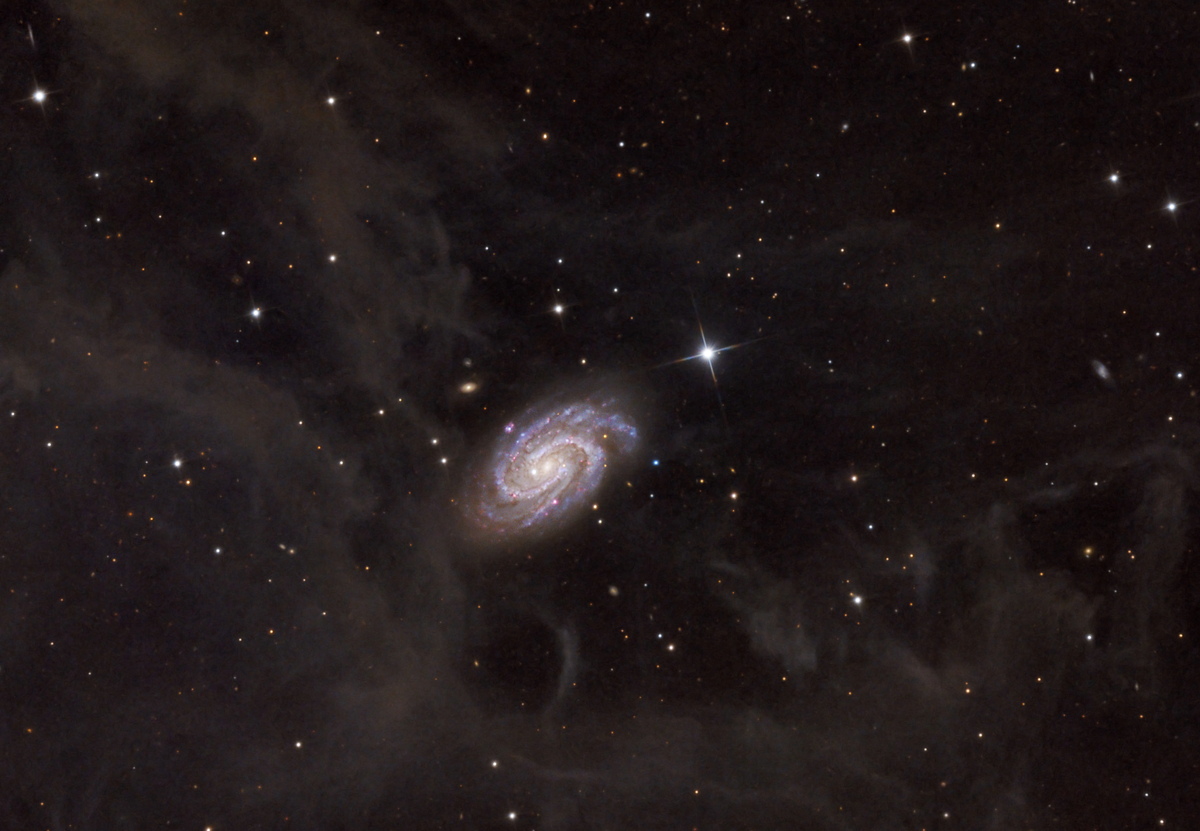Space Image of the Day Gallery (November 2015)
Solar Flares
Monday, Nov. 16, 2015: The sun erupted with small but frequent flares during Nov. 3-5, 2015. This still image shows some of the activity which included small flares and numerous plasma prominences spurting out as magnetic forces competed with each other. NASA’s Solar Dynamics Observatory caught the action in a wavelength of extreme ultraviolet light that shows activity close to the sun's surface.
— Tom Chao
Brighter
Tuesday, Nov. 17, 2015: Saturn’s moon Dione appears in the foreground of this image while the leading hemisphere of another moon, Enceladus, lies in the background. Enceladus possesses much higher reflectivity than Dione, and thus Enceladus appears brighter against the dark background of space even though it lies further away in this image, released Nov. 16, 2015.
— Tom Chao
Elliptical
Wednesday, Nov. 18, 2015: Elliptical galaxy NGC 3610 has been around for only about four billion years, and unusally for this type of galaxy, possesses a bright disc. Generally elliptical galaxies have a highly disordered structure, having been created from the merger of two or more disc galaxies. The presence of a disc within NGC 3610 gives a clue that it formed relatively recently. Image released Nov. 16, 2015.
— Tom Chao
Pierce the Veil
Thursday, Nov. 19, 2015: This colorful deep space object lies about 2100 light-years away from Earth in the constellation of Cygnus. The Veil Nebula (NGC 6995) is a supernova remnant, meaning that it is composed of the shreds of a once-massive star that ended its life in a giant explosion, flinging its outer layers into space. The hot ionized gas smashes into diffuse gaseous interstellar matter surrounding the dead star, lighting up dark space with complex structures of brightly colored gas. Image released October 2015.
— Tom Chao
Unmistakably Africa
Friday, Nov. 20, 2015: Astronaut Scott Kelly tweeted this photo from the International Space Station on Nov. 17, 2015, writing, "Unmistakably #Africa. #YearInSpace." He currently continues his one-year mission on the station, scheduled to end in March 2016.
— Tom Chao
Balanced Rock
Monday, Nov. 23, 2015: Astrophotographer Bill Whetstone sent in an undated photo of the night sky over Balanced Rock at Arches National Park in Utah.
— Tom Chao
Big Night Sky Country
Tuesday, Nov. 24, 2015: Astrophotographer Eric Wagner submitted a photo of an aurora over Glacier National Park in Montana, taken Oct. 17, 2015. He writes in an email message to Space.com: "My wife and I went to Montana for our first time, and I lucked out [as] the sky was clear for the first four nights we were there. … This was the second to last shot I took and captured the aurora, Big Dipper and an meteor all in one shot. (I thought it was an Iridium flare, but when I checked if any were visible at this time from my location, none were)."
— Tom Chao
Breaking space news, the latest updates on rocket launches, skywatching events and more!
'Arctic Magic'
Wednesday, Nov. 25, 2015: Astrophotographer Paul Zizka submitted a photo of a lone figure dwarfed by gigantic icebergs and an auroral display on the Ilulissat Icefjord in western Greenland, taken in September 2015.
— Tom Chao
Southern Nights
Thursday, Nov. 26, 2015: Amateur photographer Ann Gutschlag caught the aurora australis (southern lights) over her back fence in Invercargill, the southernmost city of New Zealand, on Sept. 20, 2015. She notes in an email message to Space.com: "Even with the light population of the city lights you could still see and enjoy the aurora."
— Tom Chao
Spiral Galaxy NGC 918
Friday, Nov. 27, 2015: Astronomer Adam Block and guest astronomer Wendy Belkin caught the sight of galaxy NGC 918 at the Mount Lemmon Skycenter in Arizona during November 2015. The galaxy lies roughly 60 million light-years away toward the constellation of Aries. Dust clouds above our own galactic plane are seen reflecting starlight dimly.
— Tom Chao
